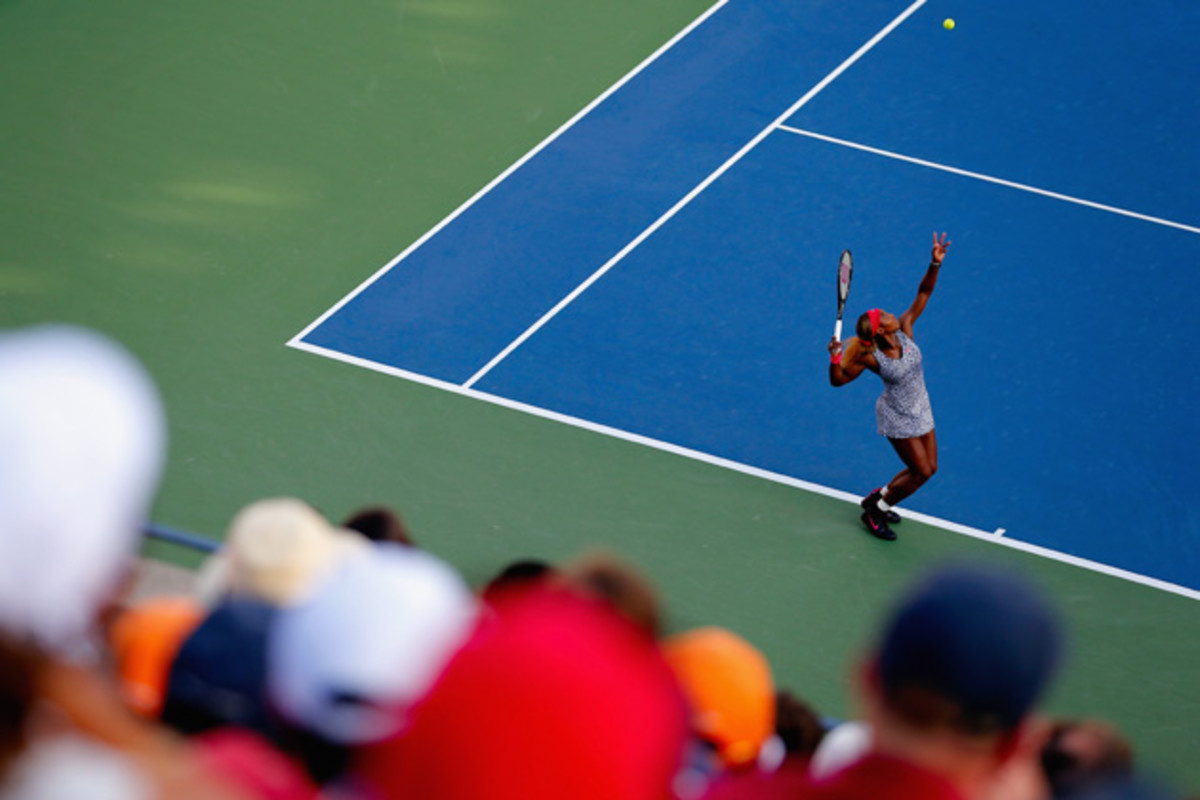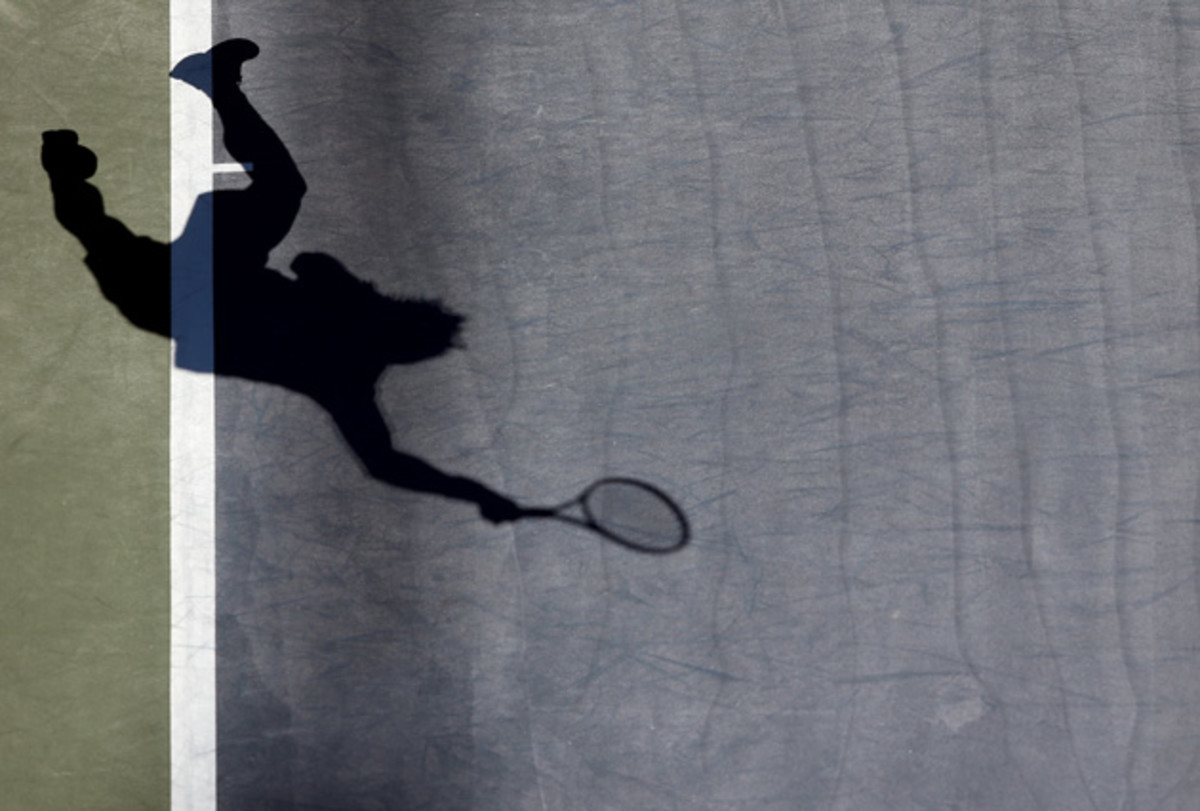The science behind creating the U.S. Open courts and signature colors

You may think of the U.S. Open as a simple hard court. But the folks who create the surfaces at the USTA Billie Jean King National Tennis Center in New York cringe at that notion.
They know the surfaces as “cushioned courts"—the addition of two layers of rubber makes all the difference.
John Graham, managing director of California Sports Surfaces, the makers of U.S. Open courts and the Boston-based parent company of court surface brands, such as DecoTurf, says the science behind crafting courts each year goes much deeper than most think.
“We have formulas that we send out to independent labs that are accredited by the International Tennis Federation and that lab performs testing on those samples,” he says. “It is a science. They are measuring the coefficient of friction of the court and coefficient of restitution of the ball coming off the court.”

The lab testing combines these readings to give every surface a “court pace rating,” or the speed of the court. Graham says they slow down and speed up the surfaces by varying the amounts and particle size of silica sand added to the acrylic finish. For example, at Indian Wells in the California desert, the tournament wants to slow the ball down slightly in the low-humidity environment, requiring Graham’s team to up the silica to grab the ball on the surface. Every tournament—and every surface—has distinct needs.
But before DecoTurf can get to thinking about the top coat, they have to arrange a total of six layers—at just three millimeters thick—to create for a U.S. Open court. Every court features an asphalt base. After the initial application, sand gets mixed in to smooth out any imperfections and provide grit for bonding. What makes the court cushioned is the large rubber particles—three coats of it applied via squeegee—laid over top the asphalt as the second layer. The third layer adds more rubber, this in the form of two or three coats of fine rubber to smooth the surface and fill in any voids.
New roof structure among changes at Arthur Ashe for 2015 U.S. Open
“There is just enough resiliency in the system for the players to feel it,” Graham says, “but not too much where the ball would bounce inconsistently.”
The fourth layer determines the speed. The texture course contains the pigments used to create the court’s color, along with the acrylic-silica formula to determine the speed. The fifth layer, a finish course, typically contains no sand and adds more color. The final layer puts down the lines, textured with the same formula of silica as the rest of the court to eliminate any skid of the ball.
Every year, just prior to the U.S. Open, a new formula is created and every court receives a new re-coat of the final three steps. Every few years a court will get stripped down to the asphalt to eliminate the buildup of coating product.
To ensure the formula rings true across all courts at the USTA BJK National Tennis Center, DecoTurf uses a computerized, controlled manufacturing plant to make all products in venue-specific batches. All ingredients are mixed by weight to ensure consistency across the batch. “If a player complains the courts are too slow, that is fine if that is what [tournament director] David Brewer has chosen,” Graham says. “We don’t want to hear courts playing at different speeds.” And the U.S. Open tests the courts after installation to ensure that doesn't happen.
You’ll find science in the court, but you’ll see it in the color too. When the U.S. Open switched to a blue in-bounds court in 2005, the change came from the experts at California Sports Surfaces. The blue hue—now trademarked as U.S. Open Blue—is just about the exact opposite color of a yellow Wilson tennis ball on the Isaac Newton color wheel, providing the most contrast for spectators and players.

While the Pantone blue 2965 U works for the U.S. Open, other shades of blues and purples can give similar visual differentiation. The tournament’s color shift has caught on across the country, Graham says, as most new courts request either blue or purple for in-bounds play.
But the U.S. Open wanted a trademarked green too—U.S. Open Green, officially. The Pantone 357U actually has yellow built in to limit the contrast with the ball.
“They wanted the courts to have a branded color, so when any viewer turned it on, they saw the blue and green and were identified by that,” Graham says about the colors now owned by the U.S. Open.
From the mixing of the colors to the exactness of the court speed, the U.S. Open has its cushioned surface down to an exact science.
Tim Newcomb covers stadiums, design and gear for Sports Illustrated. Follow him on Twitter at @tdnewcomb.
